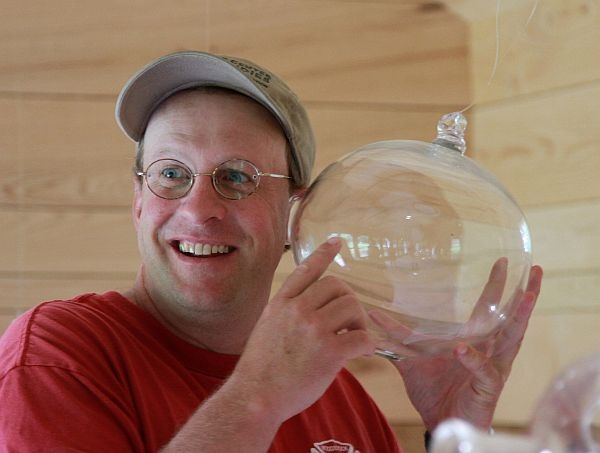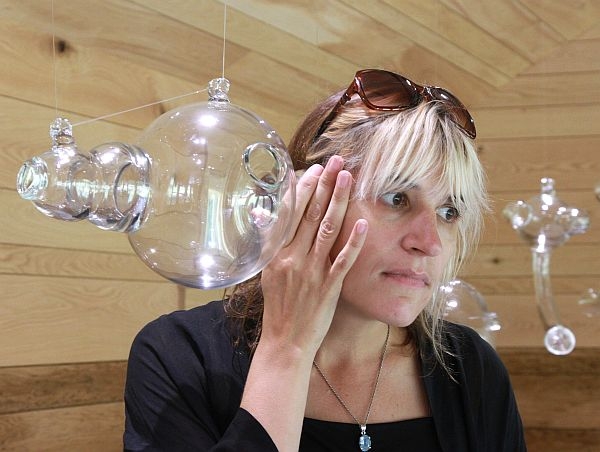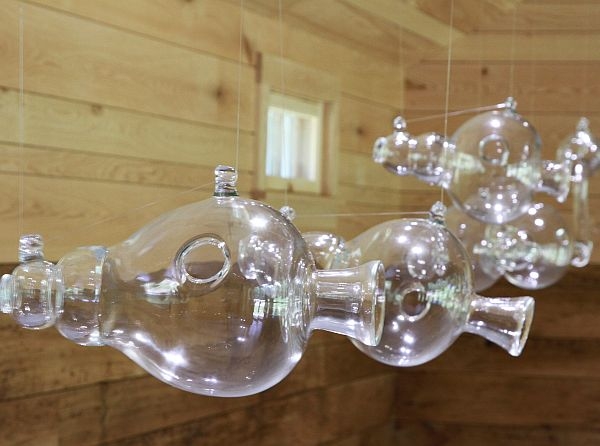Bats have been disappearing at an alarming rate over the past five years, killed by a mysterious disease called white nose syndrome.
Their decline inspired a new audio art exhibit at the Marsh-Billings-Rockefeller National Historic Park in Woodstock.
 Most bat sounds are inaudible to the human ear. The high frequency calls create sonic echoes, so the bats can navigate at night and detect predators. But the calls can be recorded using special machines. That’s what ecologist Kent McFarland was doing back in 2001 when he took a bat inventory near a pond at the National Historic Park in Woodstock.
Most bat sounds are inaudible to the human ear. The high frequency calls create sonic echoes, so the bats can navigate at night and detect predators. But the calls can be recorded using special machines. That’s what ecologist Kent McFarland was doing back in 2001 when he took a bat inventory near a pond at the National Historic Park in Woodstock.
For the bats, it was party time.
"About 65 bats were crossing in front of the machine night after night," McFarland recalls.
Last year, McFarland took his equipment back to that pond, and he managed to record only two bats. The rest, presumably, had been stricken in their caves by white nose syndrome.
"Even though you’re used to that idea and you got that idea in your head, to actually then witness the quietness- that was pretty shocking," says McFarland.
Enter Andrea Polli, a new media artist from Albuquerque who is in residence this summer at the park. She had  never heard of the bat die-off and wanted to make art celebrating their mysterious lives. Amplified by special software, the calls sounded to her like electronic music. She started manipulating the sound waves.
never heard of the bat die-off and wanted to make art celebrating their mysterious lives. Amplified by special software, the calls sounded to her like electronic music. She started manipulating the sound waves.
"I felt like there was a wide artistic license to stretch the sounds and change the pitch and play around with them because they are really not something that we can hear with our ears," says Polli.
She creates and displays her work in a new gallery converted from a pony barn. The bat music spills out of a table top speaker.
Polli is fascinated not only by the natural history of Vermont, but also its industrial heritage-including glass making, at the nearby Simon Pearce studio. So her audio exhibit also features about a dozen listening devices loosely based on an invention by a nineteenth-century scientist named Hermann von Helmholtz.
"And they are glass vessels, glass spheres with two holes in them, one for your ear and one to help the sound resonate," Polli explains.
 The globes hang from the ceiling. If you put your ear to one hole, you hear a barely audible echo of the bat music spilling out of the nearby speaker.
The globes hang from the ceiling. If you put your ear to one hole, you hear a barely audible echo of the bat music spilling out of the nearby speaker.
Scientist Kent McFarland wonders how all this would sound to a bat.
"It does sound spacey to me" he says. "But to a bat? I’ve no idea. It would be impossible for us to know, I think."
Even if the bats are dying, their calls live on in an audio exhibit that sounds at times like a chorus out of this world.